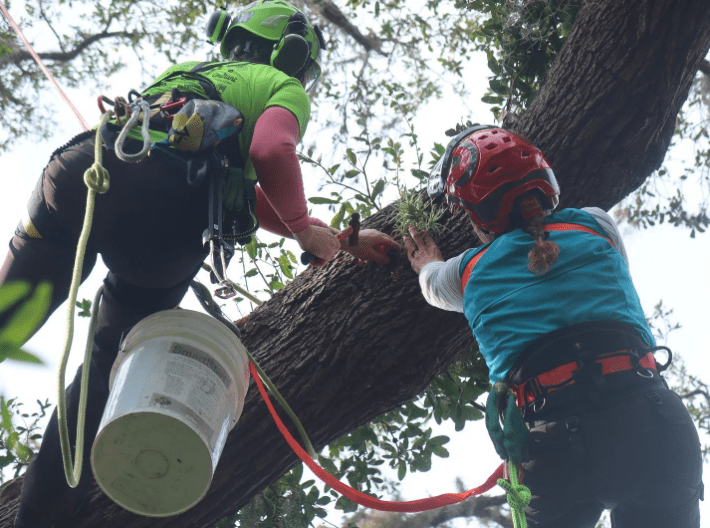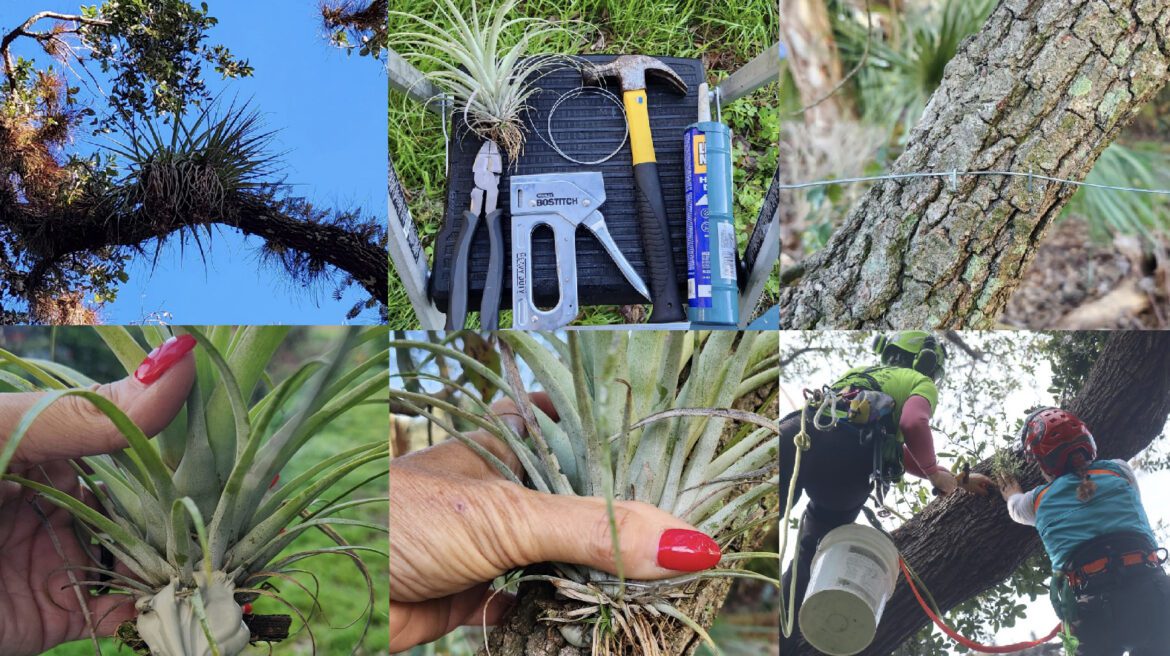Landscape trees fill our vertical views with architectural structures of beauty year-round. In Florida, where winter is mild, there is eye candy aloft, attached to the spider-like branches of towering live oaks.
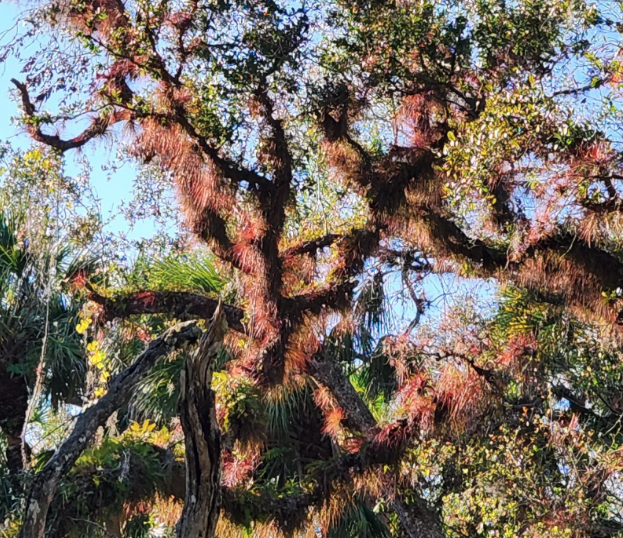
These alluring tree charms grow without soil by breathing in air and obtaining water and nutrients from their surroundings. These organisms are called Epiphytes or air plants. The term epiphyte is translated from the Greek (epi = on top of; phyte = plant). Epiphytes utilize the host plant for structural housing. They are not parasitic. They do not take from their host tree. Orchids, bromeliads and ferns identify as epiphytes. Other epiphytes include mosses, liverworts, algae and lichens. Trees that house epiphytes are known as porophytes.
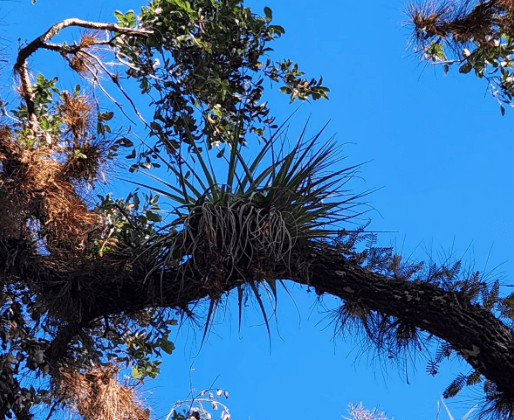
Consider accessorizing your living trees with adornments and natural whimsy. Epiphytes such as bromeliads, orchids and ferns are art in the trees. Trees with epiphytes increase amphibian, arthropod and bird diversity. The flutter of new activity will amaze you.
You will need the following tools: Liquid Nails Heavy Duty, Galvanized Steel Fence Wire – 17 Gauge, Hammer, Staple Gun with 9/16” staples, Wire cutters and an epiphyte.
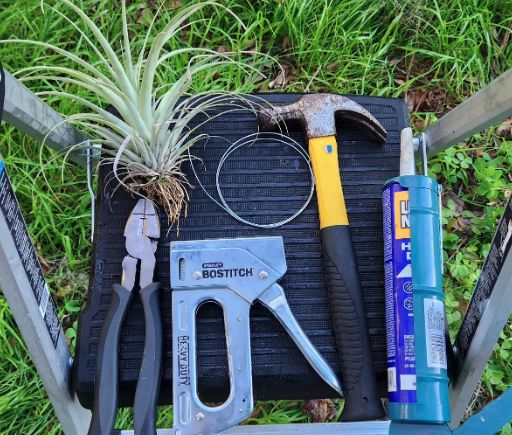
Step One: Staple wire where you want to install an epiphyte. Nail in staples.
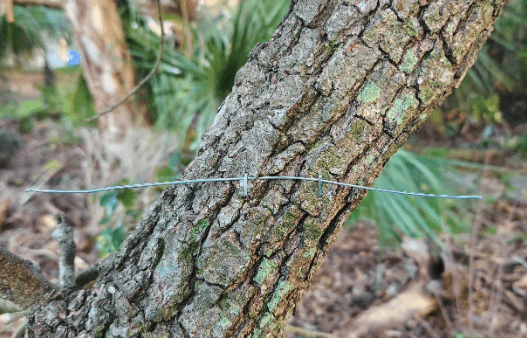
Step Two: Add Liquid Nail Cement (gray blob) to back of epiphyte – bromeliad (Tillandsia utriculata).
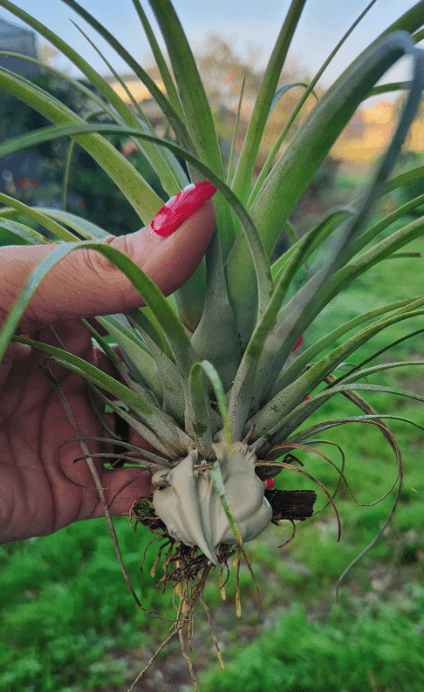
Step Three: Apply bromeliad to the tree branch on top of the wire. Twist the wire with wire cutters or pliers. Cement will set overnight. Use wire cutters to trim off excess wires.
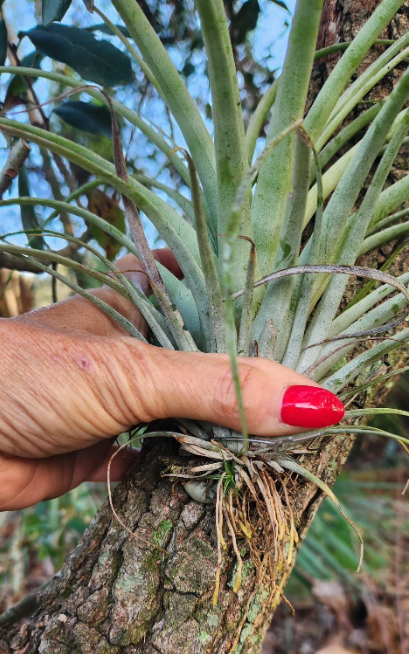
For extra credit, attend a Women’s Tree Climbing Workshop (WTCW), buy tree-climbing gear, find another like-minded woman, and elevate your landscape art in your trees!
